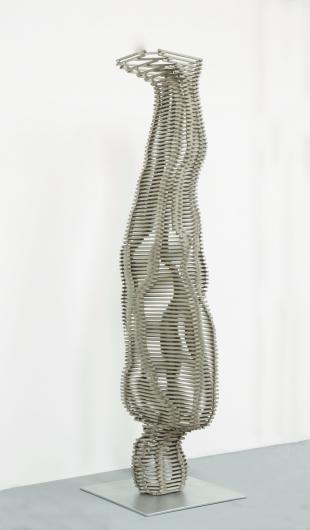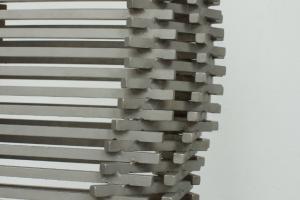
Burke's project started with a series of experiments to enclose a form with linear material. This developed into ways of enclosing and replacing the human form with the most minimal means, endeavouring to retain some sense of a human presence. Burke settled on the use of stacking, the most basic method of construction.
The generalised nature of the resultant form detracts from the reading as a specific person and communicated to Burke something more like a vessel or body trace, something both there and not there.
The transparency of form drew attention to the volume of the body, which brought to the artist's mind the language of the potter, which is littered with anthropomorphic terms such as lip, shoulder, foot, neck. The act of titling the work Vessel is a reversal of this practice.
On inverting the figure, the vessel-like property and implied lightness of form seemed to be intensified, and its sense of balance drew Burke's attention to the fact that the centre of gravity runs from the crown of the head to the feet, as if through the centre of being.
